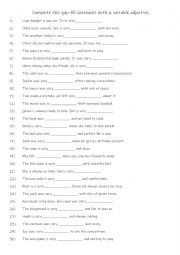
|
A1 Complete the gap-fill sentences with a suitable adjective.
Students read the sentences and complete it with a suitable adjective they know. Possible answers on page 2.
Level: elementary
Age: 10-100
Type:
Downloads: 104
|
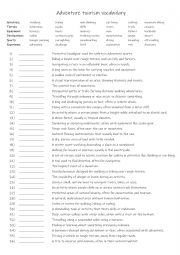
|
A2+-B1 Adventure tourism vocabulary
First, students need to familiarise themselves with the 25 words and their meanings Then they read the definitions to see which one is being described and write that word in the space provided. Answers on page 2.
Level: intermediate
Age: 10-100
Type:
Downloads: 125
|
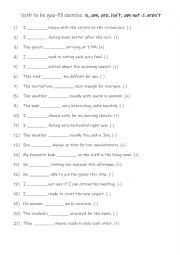
|
A2 Verb to be gap-fill exercise is, am, are, isn�t, am not & aren�t 1
Students read the sentences to see which form of the verb to be is needed to complete the sentences. (+) needs a positive form and (-) needs a negative form of verb to be. Answers on page 2
Level: elementary
Age: 7-100
Type:
Downloads: 103
|
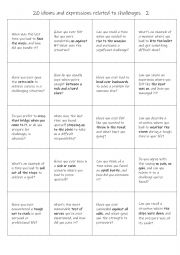
|
B1+-C1 20 idioms and expressions related to challenges 2
This is a speaking reinforcement activity to supplement the other worksheet I uploaded on 22/1/2025. Students working in pairs or small groups can either ask each other the questions or answer the question themselves.
Level: intermediate
Age: 11-100
Type:
Downloads: 117
|
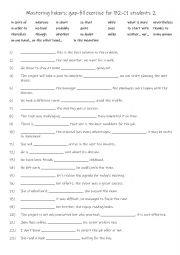
|
Mastering 23 different linkers gap-fill exercise for B2-C1 students
Learning these 23 linkers is essential because they enhance student�s ability to connect ideas, add variety to their writing and speaking, and make their communication more precise and coherent. By mastering these linkers, students can improve the clarity, fluency, and persuasiveness of their communication in both written and spoken English at ad...
Level: advanced
Age: 12-100
Type:
Downloads: 112
|
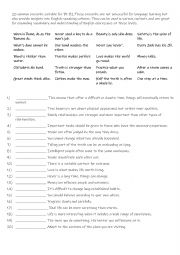
|
Match the proverbs to their meanings
20 common proverbs suitable for B1-B2.These proverbs are not only useful for language learning but also provide insights into English-speaking cultures. They can be used in various contexts and are great for expanding vocabulary and understanding of English expressions at these levels. Answers included on the following page.
Level: advanced
Age: 15-100
Type:
Downloads: 123
|
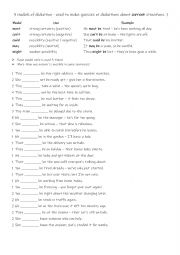
|
A2+-B1 5 modals of deduction - used to make guesses or deductions about current situations. 1
Students should learn modals of deduction because they are useful for expressing logical guesses or assumptions about present situations, helping speakers show how certain or uncertain they are. These modals, such as must, might, could, and can�t, make speech sound more natural and fluent, improve communication and reasoning skills, and are commo...
Level: elementary
Age: 10-100
Type:
Downloads: 100
|
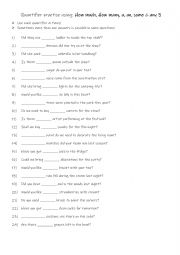
|
Quantifier practise using: How much, How many, a, an, some & any 3
Students first familiarise themselves with the 6 quantifiers and their use. Then they complete the gap-fill with the correct word. Each quantifier is used 4 times! Answers on page 2.
Level: elementary
Age: 8-100
Type:
Downloads: 115
|
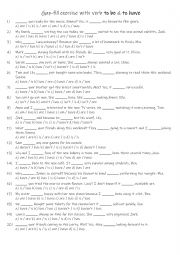
|
A1+-A2 Present simple multiple choice with verb to be & to have
Students read the present simple sentences to see which auxiliary verb is needed to complete the gap-fills. Answers on page 2.
Level: elementary
Age: 8-100
Type:
Downloads: 107
|
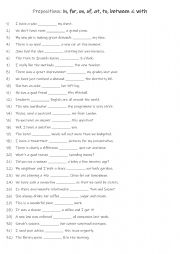
|
A2-B1 Prepositions in, for, on, of, at, to, between & with
Students first familiarise themselves with the the prepositions in bold and their usage.Then they read the sentences to see which preposition is required to complete the gap-fill.Each preposition is used 4 times. Answers on page 2.
Level: elementary
Age: 9-100
Type:
Downloads: 123
|












